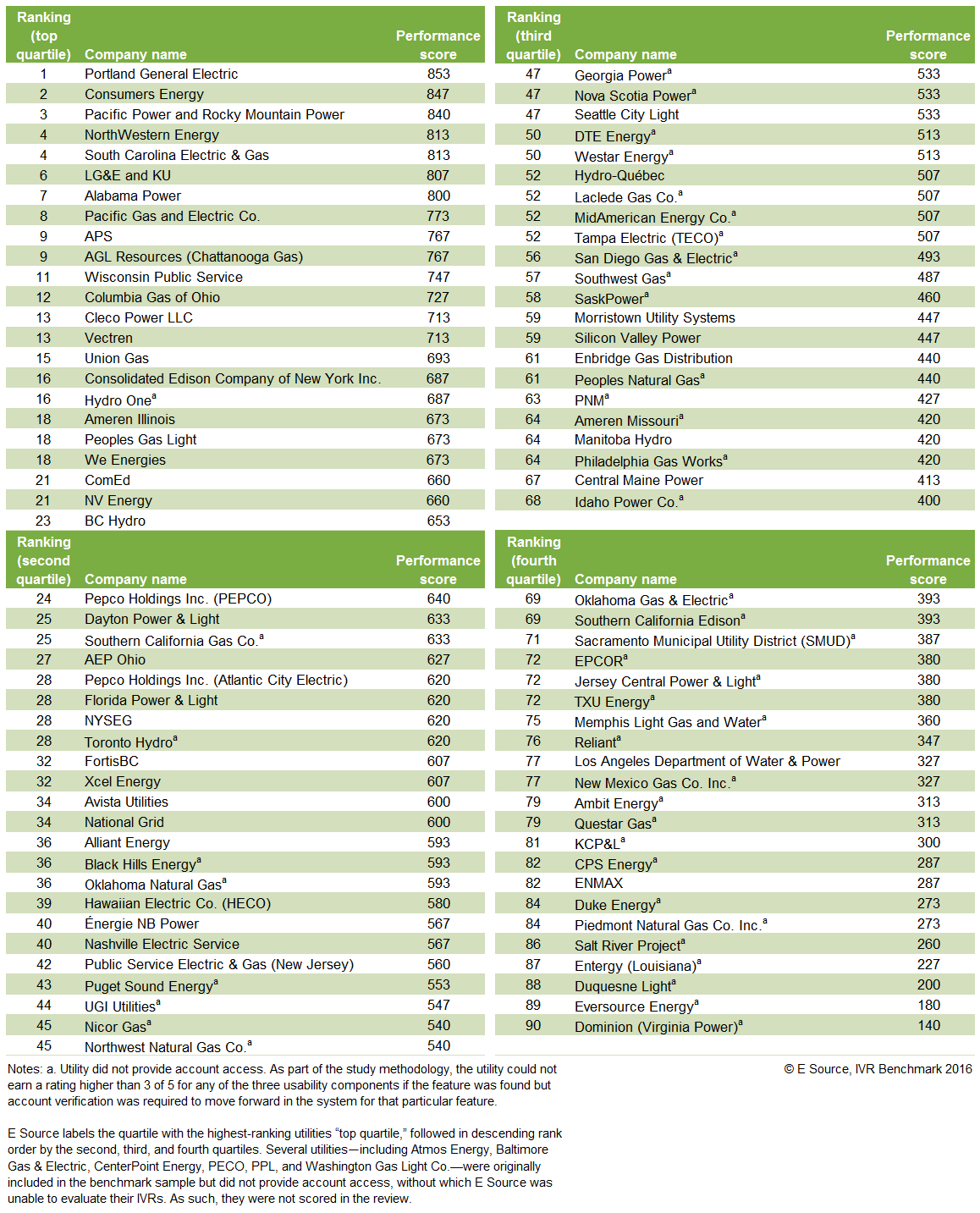Utility interactive voice response systems (IVRs) continue to offer customers an improved experience over time, allowing them to find desired features more quickly and enabling them to perform a wide range of tasks. However, there’s still room for improvement when it comes to offering a seamless customer experience.
Conducted since 2004, the biennial Review of North American Electric and Gas Company IVRs measures how well utility IVRs engage residential customers and assesses system improvements related to customers’ needs. According to the latest study, the top three utility IVRs belong to Portland General Electric, Consumers Energy, and Pacific Power and Rocky Mountain Power.
Based on utility feedback and industry trends in user experience, this year’s study of 90 utility IVRs took a different approach by breaking the user experience into three key components: navigation, functionality, and delivery. IVR features were rated based on:
- Navigation. How easy is the feature to find?
- Functionality. How easy is the feature to use?
- Delivery. How are the voice, tone, and pacing of the feature?
Between January and March 2016, a group of residential customers accessed and used the top 10 informational and/or transactional features that had been identified through E Source market research, input from industry thought leaders, and E Source expertise as the features residential customers most wanted to see on their utility’s IVR.
Overall, E Source found a need for improvement in all areas, with an emphasis on functionality, which had the lowest average rating across the features reviewed in the study. Customers expect the IVR to understand their selections, to require thorough but not excessive account authentication, and to provide contextually relevant navigation options.
Top-rated utilities are responding to customer needs by providing systems with touch-tone capabilities, consistent voice and pacing, clear yet descriptive menu options, and self-service features for billing and payment. “It’s important to provide an intuitive, consistent, comprehensive experience to contain callers in your IVR. Our research shows that the IVR is one of the least preferred contact channels among customers, but there are opportunities to change that dynamic by providing adequate self-service options and allowing callers to easily connect to an agent,” says Sarah Hutson, senior market research analyst at E Source.
Interestingly, the top-rated IVRs all provide callers with a touch-tone option. “Touch-tone IVRs have been the standard in the contact center industry for a very long time, so many customers feel comfortable interacting with them. We expect that as natural language or conversational IVR technologies continue to improve, deployments of these systems will increase and utilities will become better at optimizing these systems, leading to a better experience for customers,” says Jeffrey Daigle, senior customer experience analyst at E Source.
Regional rankings are as follows:
- Canada: Union Gas, Hydro One, BC Hydro
- US, Midwest: Consumers Energy, Wisconsin Public Service, Columbia Gas of Ohio
- US, Northeast: Consolidated Edison Company of New York Inc., Pepco Holdings Inc. (Atlantic City Electric), NYSEG
- US, South: South Carolina Electric & Gas, LG&E and KU, Alabama Power
- US, West: Portland General Electric, Pacific Power and Rocky Mountain Power, NorthWestern Energy
Rankings per utility type:
- Electric: Portland General Electric, Pacific Power, Alabama Power
- Gas: AGL Resources (Chattanooga Gas), Columbia Gas of Ohio, Union Gas
- Combined gas and electric: Consumers Energy, South Carolina Electric & Gas, NorthWestern Energy
For more information about this comprehensive study, please visit Review of North American Electric and Gas Company IVRs.
Performance ranking of US and Canadian residential IVRs, 2016
About E Source
For 30 years, E Source has been providing research, consulting, and market research to more than 300 utilities and their partners. This guidance helps our customers advance their efficiency programs, enhance customer relationships, and use energy more efficiently.
Public Relations Contact
Kym Wootton, Vice President of Marketing, E Source
Email Kym Wootton
303-345-9168

